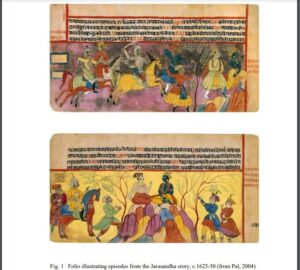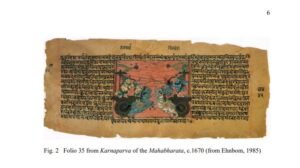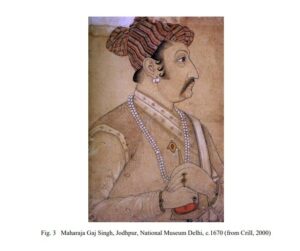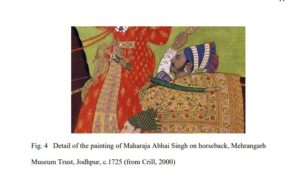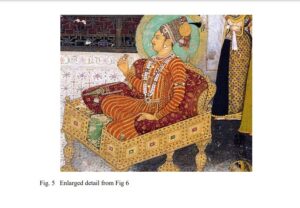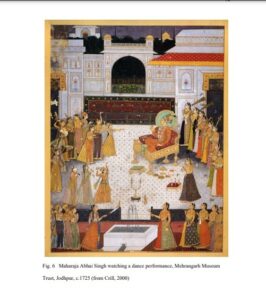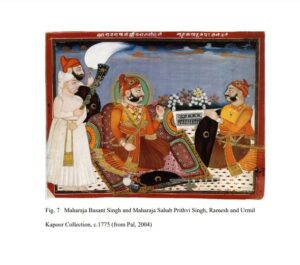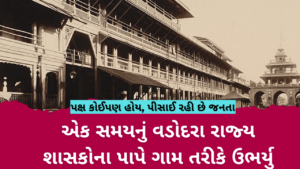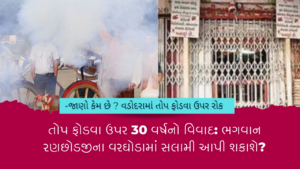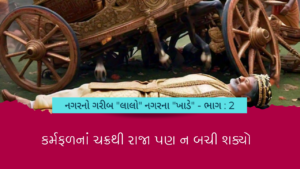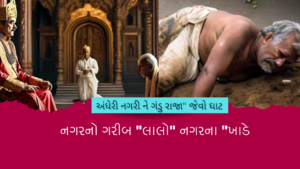A rich trove of miniature paintings awaits anyone seeking to untangle the strands of Indian mythology in the lovely city of Udaipur, where history meets craftsmanship. With their delicate brush strokes and precise detailing, these miniature works serve as windows into the realms of gods, goddesses, and epic tales that have influenced India’s spiritual and cultural fabric for ages. We delve into the intriguing realm of Udaipur’s tiny paintings and their profound link to Indian mythology in this investigation.
Indian miniature paintings date back to the eleventh century when they first appeared as vivid pictures inside the pages of sacred texts and scriptures. These early artworks, typically 3″x12″ in size, covered palm leaves with elaborate renderings of religious storytelling, similar to murmured prayers preserved in colour. They sought shelter in temples, encased in wooden coverings, functioning as visual doorways to the holy. This spiritual protection preserved their survival, ushering in the earliest miniature paintings.
The Miniature paintings of Udaipur serve as visual histories of the rich tales and allegories at the core of Indian mythology. Artists have caught the spirit of gods and goddesses with devotion and elegance, reinventing their celestial shapes and putting their numerous duties and traits onto paint. The end product is a stunning collection of miniature deities, each one a monument to the painters’ ability and dedication to their profession. Indian mythology is densely linked with epic narratives, which Udaipur’s miniature paintings expertly portray in tiny yet compelling forms. These miniature paintings feature scenes from the Ramayana, where Lord Ram’s valour and Goddess Sita’s elegance come to life, or the Mahabharat, with its dense web of familial relationships and moral quandaries.
The Rajputs were fond of religious topics, which could be observed in their writing and music. The majority of these paintings were intended to be held in the hand rather than put on walls. A group of enthusiasts sat around and handed the paintings from hand to hand. The Rajputs frequently commissioned artwork to commemorate a religious festival, as a wedding present, or to commemorate a unique memorable occurrence. Artists made some of the artworks as presents for their patrons. The majority of the artists were court professionals, however others were freelance painters.
This artistic style also bore the imprint of Mughal rulers, who arrived in India from present-day Afghanistan under Babar’s leadership in 1526. The Mughal emperors not only possessed a refined taste for art but also established workshops to nurture artists, introducing fresh mediums and innovative drawing techniques. Their patronage became a catalyst, propelling the evolution of miniature paintings across India and fostering distinct regional schools characterized by local nuances. This diversification gave rise to multiple schools of Indian miniature art, each distinguished by its individuality and unique attributes.
The Mughal and Rajput schools of miniature paintings exemplified distinct sensibilities and preferences. Mughal art embraced historical accuracy and natural representation, as well as the precision of portraiture infused with lifelike details. In contrast, Rajput patrons embraced a tradition of mythological and rhetorical motifs, which found expression in unadorned compositions infused with vibrant and daring color palettes.
Another notable hallmark is the meticulous and intricate nature of these paintings. These opulent artworks display a remarkable finesse in brushwork, showcasing a painstaking dedication to intricacy in design and texture (Figs. 4, 5). Some are so finely detailed that they require the aid of a magnifying glass for full appreciation, as the naked eye often fails to capture their subtle nuances. Upon closer inspection, the miniature features such as skin texture or fur become discernible, with each hair of an eyebrow or whisker meticulously rendered.
Such paintings are an embodiment of meticulous craftsmanship, composed of thousands of brushstrokes, meticulously capturing even the tiniest nuances. This extends to clothing, with multiple layers of color meticulously applied. The process followed a sequential order: beginning with the background, followed by the body, clothing, and accessories, and culminating in the application of gold or other ornaments where needed. Udaipur’s painters bring their themes to life with each brush stroke, infusing them with a variety of emotions. Whether it’s the exquisite love shared by Radha and Krishna or the bravery of soldiers locked in conflict, these paintings elicit a wide range of emotions that transcend time. The rich colors and expressive depictions make it evident that these little canvases are more than just static images—they are windows into the human experience. Once completed, the painting was mounted, and its borders were adorned. Often, these borders featured intricate patterns that elegantly framed the composition.
Even the attire and carpets were not spared from this dedication to precision. Upon close examination, one can discern elaborate floral or geometric motifs and adornments. In finely executed pieces, the very folds of fabric, the texture of cloth, the play of transparency, the intricacies of embroidery, and the artistry of borders come alive (Figs. 4, 5). Even ornamental details are etched with exquisite precision (Figs. 6, 7). While facial features, such as eyes, may be stylized, each visage retains its distinctiveness. In the case of portraits of prominent rulers, a sense of majesty and heroism radiates, capturing their potent personas. The minutiae of individual features—hairstyles, sideburns, hands, and feet—are meticulously portrayed, infusing the artwork with a sense of lifelike realism.
Within these artworks, the settings underwent a process of idealization, wherein landscapes assumed symbolic dimensions. These portrayals of nature held deeper connotations—each season was imbued with its own meaning. For instance, the depiction of summer often featured serene ponds, deer seeking refuge in shade, wallowing buffaloes, or figures lounging in tranquil repose. The arrival of the rainy season was signified by the presence of clouds, flashes of lightning, and birds perched upon trees (Fig. 8). Autumn’s embrace brought forth heavily laden fruit trees and bountiful fields, while mountains were adorned with a tapestry of rocks, trees, and cascading waterfalls. The night sky, an embodiment of serenity, came alive with a multitude of stars, while the forest abounded with lush foliage teeming with avian and animal life (Fig. 8). The waters, depicted with precision, were inhabited by fish, tortoises, and lotuses, capturing the essence of nature’s splendor.
These paintings offer glimpses into a world of grandeur and ceremonial opulence, as well as the refined pastimes and amusements of both genders. These vistas, however, are not devoid of an idealized veneer—rather, they are viewed through the romantic lens of artistic imagination, casting an ethereal hue over the scenes depicted.
The marriage of Udaipur’s miniature art and Indian mythology goes beyond historical documentation; it is still important in today’s cultural scene. While remaining faithful to their roots, contemporary artists infuse these old themes with new views, engaging with audiences of all ages. These creative reinterpretations ensure that Indian mythology’s ageless wisdom remains accessible and approachable to the modern seeker.
In a world where art is generally portrayed on large canvases, Udaipur’s small paintings remind us that greatness may be attained via complication and attention to detail. They bear witness to the creative energy that has thrived in the heart of Udaipur, and its continuing charm bears witness to their eternal allure. So, the next time you stare upon a Udaipur miniature, realize that you are immersing yourself in a voyage through time, a journey that unveils the rich fabric of Udaipur’s cultural legacy in all its splendor.
— An Article by Poojan Patel


